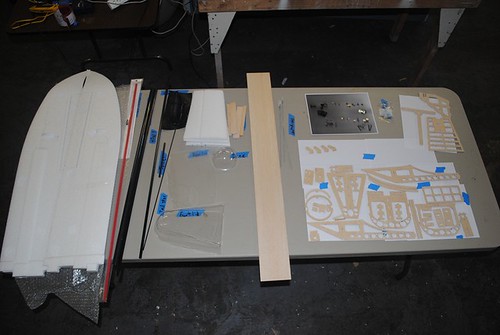There are 4 participants with quite interesting UAVs.
AFAIK they were stabilized FPV planes in 2009 with onboard autopilot prototypes made by the students.
Current constructions are:
-----------------------------------------------------------------------------------------------------------------------------------------
Rzeszów University of Technology
PR-5+ Wiewiór
http://kni.prz.edu.pl/bsi/?module=pr5plus&action=opis
(Wiewiór=male squirrel, probably the one from Ice Age Cartoon, watch the nose...)
(see picture above)
Wiewiór, following my imagination:
Maiden:
https://www.youtube.com/watch?v=y5JaiPQnqss
Catapult testing:
https://www.youtube.com/watch?v=zGtdsM8GUFk
-----------------------------------------------------------------------------------------------------------------------------------------
Warsaw University of Technology
Adeli 2 http://aerodesign.meil.pw.edu.pl/uav/
https://www.youtube.com/watch?v=aL1dEbgLxpc
-----------------------------------------------------------------------------------------------------------------------------------------
Bialystok University of Technology
PB-BSL-2
http://www.bslbialystok.yoyo.pl/
Maiden flights (sort of Delivery 1 from Outback challenge)
https://www.youtube.com/watch?v=t-vR4BNGtYk&NR=1
https://www.youtube.com/watch?v=L0HCqMdQx84
https://www.youtube.com/watch?v=A_qsmVzjjqQ
-----------------------------------------------------------------------------------------------------------------------------------------
Wrocław University of Technology
UAV BALSA (in fact made of fiberglass)
http://pwrbalsa.blogspot.com
Maiden:
https://www.youtube.com/watch?v=xVON2oHNhr4
-----------------------------------------------------------------------------------------------------------------------------------------
Rules (of course in Polish - yes, is profitable to learn Polish in order to follow the most recent developments in avaition technology)
http://miwl.smil.org.pl/download/Regulamin_BSP-2010.pdf
Note: BSL means UAV in Polish.
Almost all entrants have very well engineered platforms made of kevlar, carbon fibrglass, CNC machined metal wing joints, pan-tilt turrets.
Somehow Poles got crasy about bimotor with less or more inverted Vtail plus ailerons.
No landing gears, apaprently no flaps, at elast 2 got parachute since 2 years.
Adeli and Wiewior had their SAE heavy lifter versions.
The mission is similar to Outback challenge in that the main problem is identifying a target position (square cloth). Nothing has to be dropped, the search area is closer, but the landing area is very difficult (must land uphill or between the trees, this is a glider airstrip on mountain slope. Pteryx was there, see the photomap:
http://www.aerialrobotics.eu/pteryx//bezmiechowa-stitch-2010-05-29.jpg).















